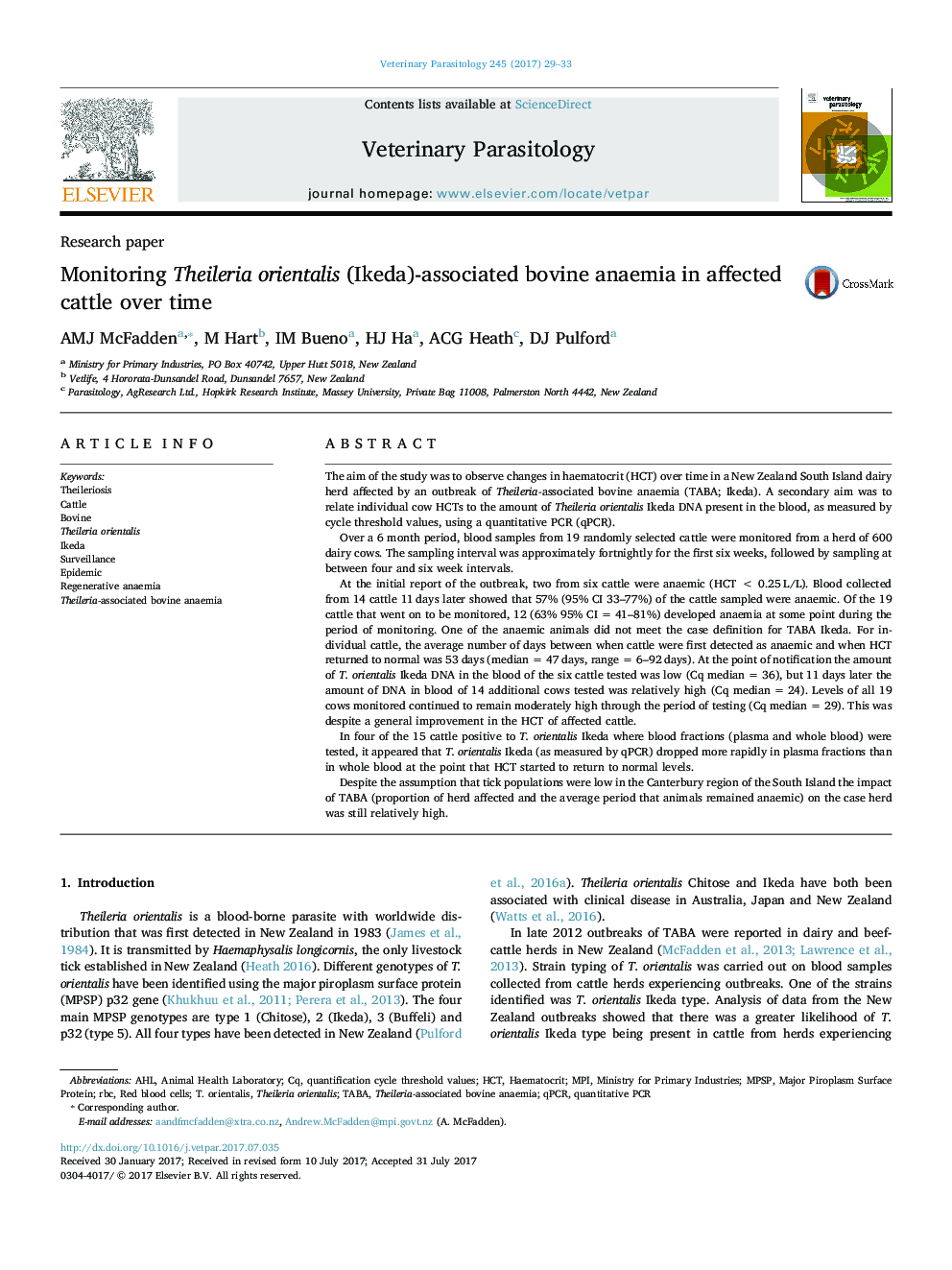| کد مقاله | کد نشریه | سال انتشار | مقاله انگلیسی | نسخه تمام متن |
|---|---|---|---|---|
| 5545673 | 1555631 | 2017 | 5 صفحه PDF | دانلود رایگان |

- Impacts in cattle from T. orientalis with low numbers of the tick vector.
- Non-linear relationship between the amount of T. orientalis DNA and haematocrit.
- Plasma concentrations of T. orientalis DNA decline at the point that HCT normalises.
The aim of the study was to observe changes in haematocrit (HCT) over time in a New Zealand South Island dairy herd affected by an outbreak of Theileria-associated bovine anaemia (TABA; Ikeda). A secondary aim was to relate individual cow HCTs to the amount of Theileria orientalis Ikeda DNA present in the blood, as measured by cycle threshold values, using a quantitative PCR (qPCR).Over a 6 month period, blood samples from 19 randomly selected cattle were monitored from a herd of 600 dairy cows. The sampling interval was approximately fortnightly for the first six weeks, followed by sampling at between four and six week intervals.At the initial report of the outbreak, two from six cattle were anaemic (HCT < 0.25 L/L). Blood collected from 14 cattle 11âdays later showed that 57% (95% CI 33-77%) of the cattle sampled were anaemic. Of the 19 cattle that went on to be monitored, 12 (63% 95% CI = 41-81%) developed anaemia at some point during the period of monitoring. One of the anaemic animals did not meet the case definition for TABA Ikeda. For individual cattle, the average number of days between when cattle were first detected as anaemic and when HCT returned to normal was 53 days (median = 47 days, range = 6-92 days). At the point of notification the amount of T. orientalis Ikeda DNA in the blood of the six cattle tested was low (Cq median = 36), but 11 days later the amount of DNA in blood of 14 additional cows tested was relatively high (Cq median = 24). Levels of all 19 cows monitored continued to remain moderately high through the period of testing (Cq median = 29). This was despite a general improvement in the HCT of affected cattle.In four of the 15 cattle positive to T. orientalis Ikeda where blood fractions (plasma and whole blood) were tested, it appeared that T. orientalis Ikeda (as measured by qPCR) dropped more rapidly in plasma fractions than in whole blood at the point that HCT started to return to normal levels.Despite the assumption that tick populations were low in the Canterbury region of the South Island the impact of TABA (proportion of herd affected and the average period that animals remained anaemic) on the case herd was still relatively high.
Journal: Veterinary Parasitology - Volume 245, 15 October 2017, Pages 29-33